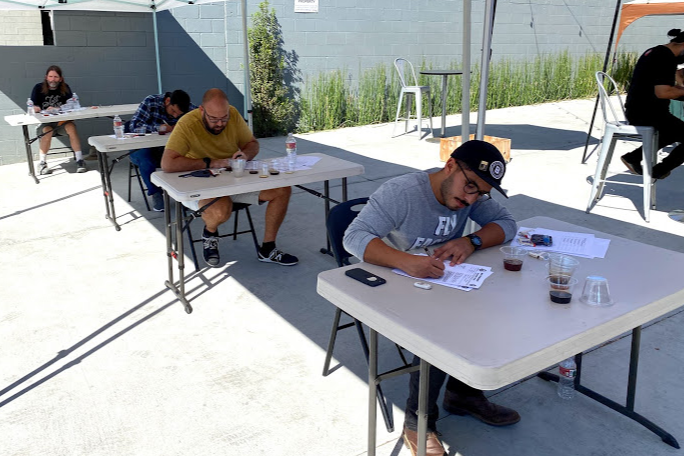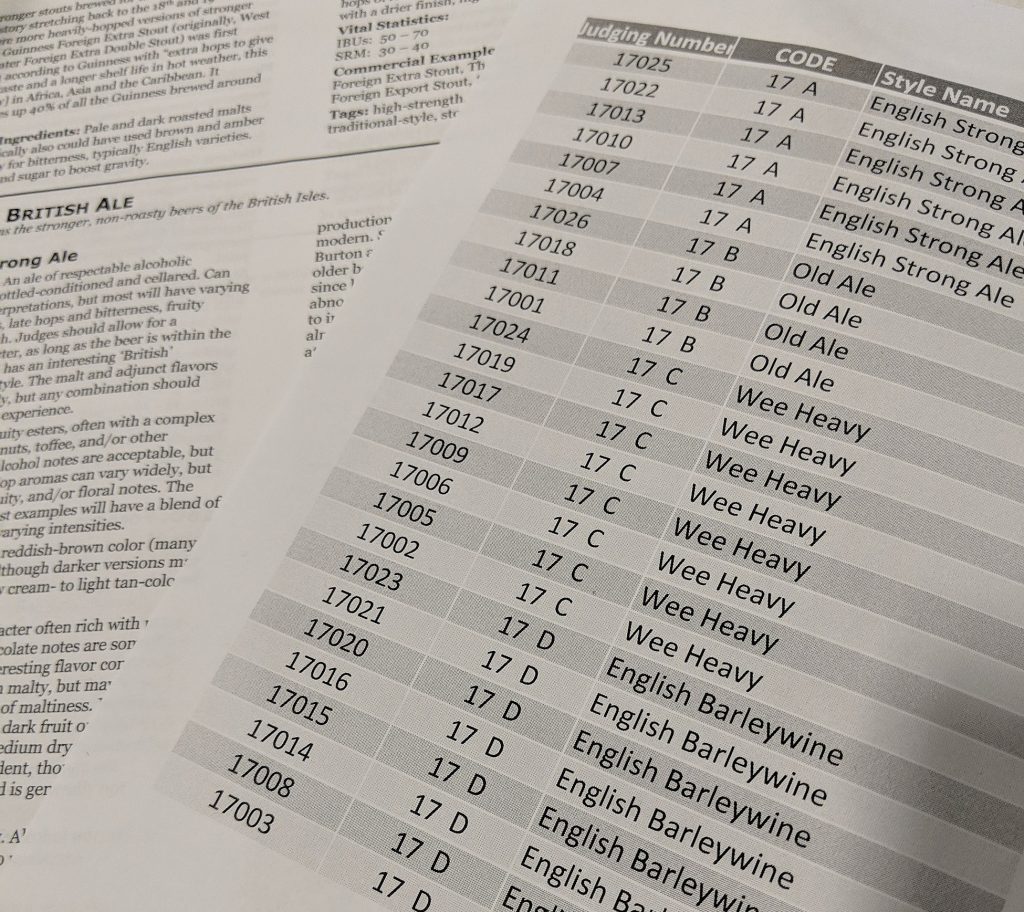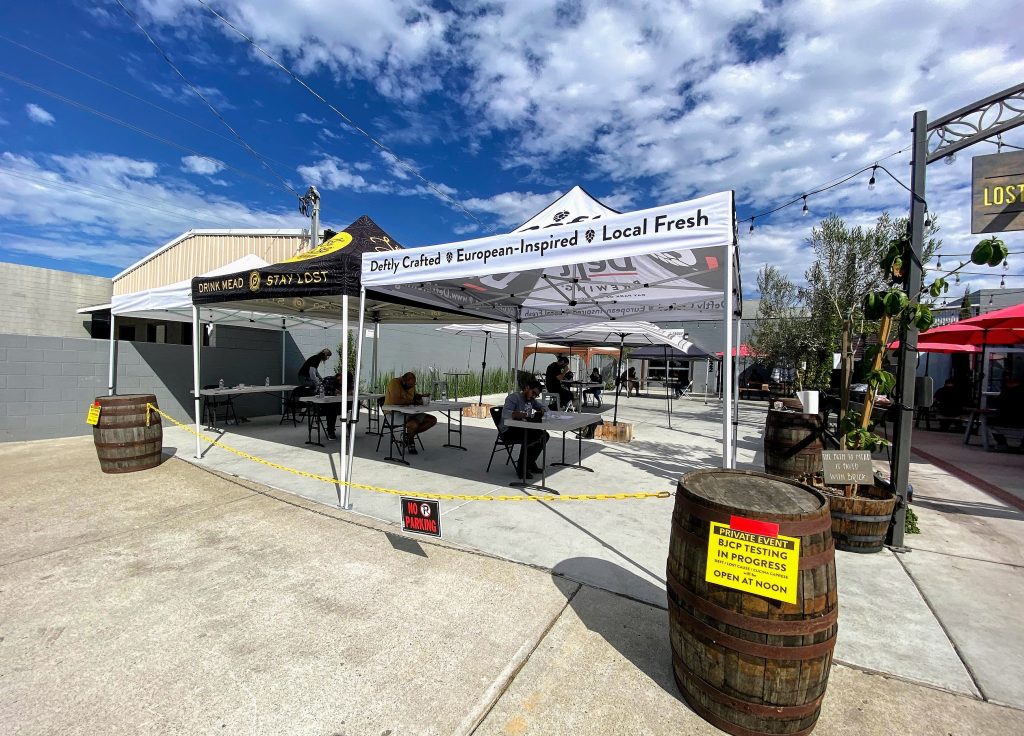
By Chris Leguizamon
In my last beer education column, I talked about the Beer Judge Certification Program (BJCP), its origins and some strategies for preparing one’s mind and senses for the exams required to gain certification. This time around, I’d like to share information about those exams as well as some of my past experiences, plus helpful tips from myself and some certified legends you should get to know like nationally ranked BJCP Judge Geoff Bragg and master-ranked BJCP Oleg Shpyrko. Settle in. School is in session!
BJCP Beer Judge Entrance Examination
Most prospective judges covet the glamour of bellying up to a bevy of samplers to taste and evaluate beers, but first you have to earn your seat at the judge’s table. The first step is the BJCP Beer Judge Entrance Exam, which serves as a basic screening of all potential candidates. This online-only exam covers fundamental topics like general beer-style comparisons, how ingredients affect processes, basic sensory vocabulary and the overall structure of the BJCP program. An understanding of all of these fields is essential because you will eventually find yourself seated with an unlabeled beer and a scoresheet that you will need to evaluate and score compared to world-class examples, then provide cogent feedback to the individual who brewed it. This screening helps ensure only serious applicants get to the next stage.
The entrance exam consists of 180 questions which must be completed in 60 minutes. There are 112 true-or-false questions, 44 multiple choice and 24 check-box questions. A score of at least 64% is required to pass, which equates to answering 116 questions correctly. This exam goes by very quickly, so knowing your fundamentals is a must! Luckily, BJCP has graciously created an extremely thorough study guide that includes a breakdown of which category and question format to expect plus key ways to crush the exam.
Once you’ve boned up on the aforementioned guide and feel ready to take the first steps on the long road to BJCP certification, access the entrance exam via Coursewebs. A free mini practice exam and various purchase options are offered, including a bundle deal of three exams for the price of two in English, Spanish, Portuguese, Chinese, and an English version with a time extension for those who have a disability or a native language that isn’t available. Make your purchase then prepare to slay.
In my opinion, this is one of the most honest beer exams I’ve taken and really sets the program’s expectation of each candidate. When I first took this in the fall of 2017, I had passed my Certified Cicerone Exam earlier that year, so I came in with the chest-out mentality, thinking, “Oh I know beer!” This exam instantly humbled me by tossing in questions that exposed big blind spots in my expertise. What type of questions, you ask? Remember, BJCP was created to improve the overall quality of homebrew, so there were questions like effects of a beta amylase rest to the body of a beer, a comparison of original gravity between two stout styles and the usage of acidified malts when using dark malts.
Definitely take the safe route and go with the three-for-two bundle. I passed but I will never forget how that entrance exam set the tempo and standard for what the BJCP program is and entails.
Chris’ Pro-Tips: I highly recommend brushing off the old homebrew set you may have or (social-distance) homebrewing with a friend. Getting in the mind of a homebrewer really helps pass this exam! And while this exam is very low-impact on your wallet, if you don’t study beforehand, you might as well fold up your money like a paper airplane and fling it off the North Park water tower.
Oleg’s Pro-Tips: The exam is open-book, but with an average of 20 seconds per question, timing is crucial. A combination of solid knowledge of styles and some referenced sources nearby helps a great deal. Learn to compartmentalize beer styles by commonalities (e.g. countries of origin: Belgian, English, German, American), ingredients, statistics and techniques.

BJCP Beer Judging Examination
Now that you have endured and overcome the Entrance Exam, you’ve earned your seat at the Beer Judging Exam, the purpose of which is to find out how your evaluation abilities compare to a panel of upper-level BJCP proctors. This calibration involves an in-person 90-minute exam where examinees evaluate six beers served in 15-minute intervals while the panel simultaneously reviews the exact same beers in a separate room. Using the same beers and time constraint provides a clear comparison on how the exam taker stack up against seasoned judges. Once the 90 minutes are over, eager participants then gather around as the panel reveals their consensus score.
Let’s admit something here: there will be butterflies in your belly every single time you take this exam! My best advice is to simply take a deep breath. Getting your mind focused and senses ready is paramount for these exhausting 90 minutes, which genuinely feel like a six-round heavyweight boxing match. This closed-book exam will test how much you’ve practiced and your understanding of evaluating beer samples, either homebrew or commercial. Luckily, this exam only covers more common styles (BJCP Beer Categories 1-26), so no obscure historical styles have to be memorized. Time will definitely zip by, so after each scoresheet has been completed, take a sip of water, scan for completeness, neutralize your senses (i.e., sniff yourself…it’s the most common scent to you), and get ready to do it all over again. It will feel like you’ve gone a full six rounds, but all your preparation will pay off in the end!
Traditionally, you are required to take the Beer Judging Exam within a year of passing the Entrance Exam but, of course, COVID-19 has changed that requirement. After passing the latter, keep a sharp eye on the BJCP calendar to find and schedule an exam near you. With safety precautions of social distancing and, ideally, an all-outdoor exam environment, seats will be limited, so be an early bird and contact the exam administrator (not the BJCP program) for availability sooner than later.

In early November of 2020, I was able to experience a pandemic-era Beer Judging Exam that Oleg administered (pictured above). It was hosted at Deft Brewing by the Bay Park company’s co-founder Morris Nuspl. Every attendee had their own table under their own easy-up tent, writing implements were sanitized and only Oleg went from table to table to distribute the beer samples. Oleg and Mo did an outstanding job of making safety a priority!
Around three months after taking the Beer Judging Exam, you will receive your grade, which will be based on completeness of scoresheets (20%), your score compared to that of the panel (20%), your descriptions compared to those of the panel (20%), your perceptions compared to those of the panel (20%) and the feedback applied to each beer (20%). The grade you are assigned will determine your rank; “Apprentice” if you score less than 60%, “Recognized” if you score 60% or more.
Chris’ Pro-Tips: Practice makes perfect! Working on your tempo is important because nothing feels worse than getting behind early on exam day. Oleg conducts monthly virtual classes going over styles and administers the Judging / Written Exam locally. You can click here to sign up for his email group.
Oleg’s Pro-Tips: Practice mindful drinking every time you drink a beer and have BJCP guidelines by your side. Take notes. Seek out classic beers, with special focus on BJCP styles you may be less familiar with as well as homebrewed examples. Pay attention to different attributes of each style, following the BJCP scoresheet structure and keep filling out practice scoresheets, aiming for 10-12 minutes each while being complete, precise and descriptive regarding aroma, appearance, flavor and mouthfeel, while using proper beer-related vocabulary. Ultimately, judging or discussing beers with other mindful beer enthusiasts—ideally in a group setting—is the best way to keep calibrating your palate and to learn about your personal sensitivities or how they express in various beer styles.
Geoff’s Pro-Tips: Being thorough on your scoresheet is one of the keys to getting a great score on the exam. Each aspect of a beer that you need to comment on is listed on the scoresheet. Tick off each one as you go to make sure you get full credit. Comment on all aspects of the beer and make sure you are using all the lines on the scoresheet. Make sure you have less than two blank lines on your scoresheet to avoid losing points.
Check back to San Diego Beer News next week when we tackle the BJCP’s Written Exam and share our tips for making it through that test of a judge’s extensive beer knowledge.

